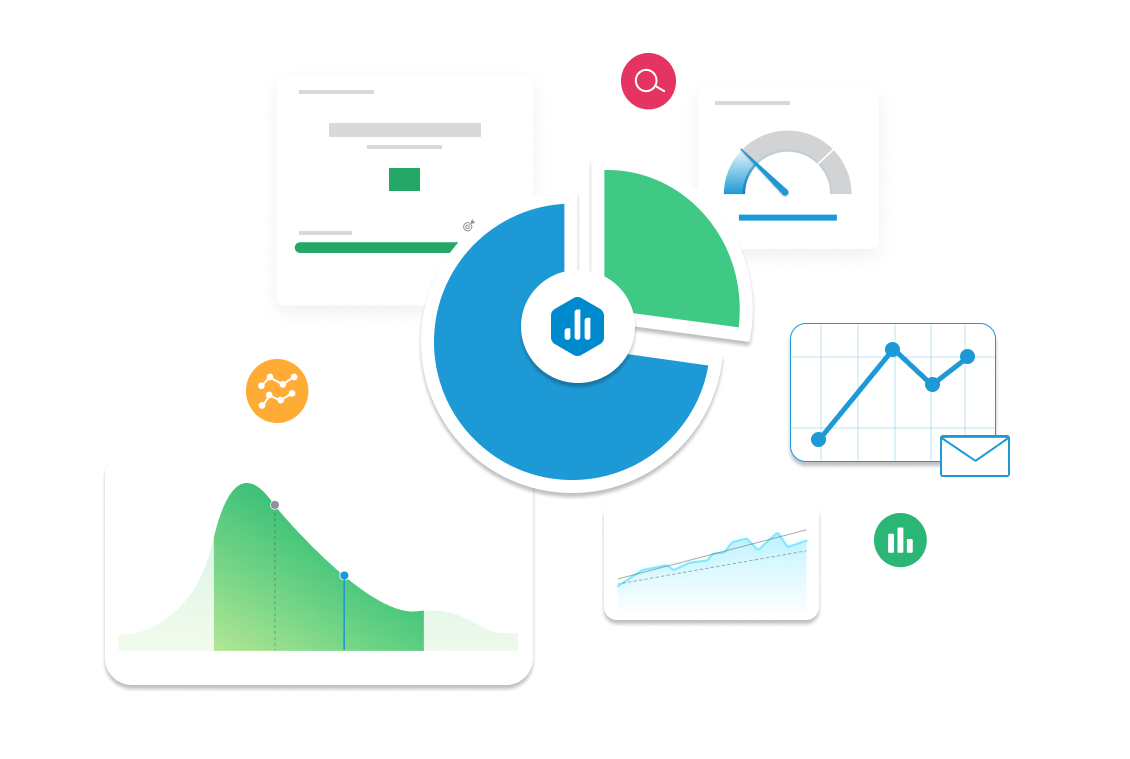Sales Qualified Lead (SQL)
Discover how Sales Qualified Leads (SQLs) are prospects who have been vetted by marketing and deemed ready for direct sales follow-up. Learn how to define, track, and improve this KPI to streamline your pipeline and close more deals.

| Category |
Marketing, Sales |
|---|---|
| Type |
Leading Indicator |
| Calculation |
No universal formula SQLs = Total Leads that meet predefined sales criteria |
| Measure |
Tracks the number of leads that are evaluated and accepted by the sales team as ready for a conversation or deal progression. |
| Data Sources: |
HubSpot, Salesforce, Marketo, Pipedrive, Zoho CRM, Outreach, Salesloft, custom lead scoring tools. |
| Frequency |
Tracked weekly or monthly to evaluate lead pipeline health and the efficiency of marketing-to-sales handoff. |
Example target
Generate 500 SQLs in Q3 by refining MQL handoff criteria, enhancing lead scoring models, and aligning outreach timing.
Example Reports Use Case
A Sales Operations Manager tracks SQLs to monitor lead quality and funnel velocity. If SQL volume drops, they may revisit lead scoring rules, tighten ICP criteria, or adjust the sales team’s SLA response time.
What are Sales Qualified Leads (SQLs)
Sales Qualified Leads (SQLs) are potential customers who’ve been vetted by the sales team and are considered ready for direct sales engagement. These leads have shown clear buying intent—through actions like requesting a demo, engaging with a sales rep, or meeting specific criteria (like company size or budget)—that signals they’re likely to make a purchase soon.
SQLs are important because they help sales teams focus their time and energy on leads most likely to convert, improving efficiency and boosting revenue. This KPI also helps align marketing and sales teams, ensuring high-potential leads move smoothly through the funnel.
There’s no one-size-fits-all formula, but SQLs are typically calculated as:
SQLs = Total Leads that meet predefined sales criteria
For example, if 500 leads are passed from marketing and 120 meet your sales-readiness standards, you have 120 SQLs. Tracking SQLs regularly helps optimize lead qualification and improve close rates.
How to Calculate Variants of Sales Qualified Leads (SQLs)
Sales Qualified Leads (SQLs) don’t use a complex formula—they’re counted based on how many leads meet your sales-readiness criteria. But you can track SQLs in different ways to get more insights.
1. Monthly or Yearly SQLs
Track SQLs over time to see trends and measure marketing and sales alignment.
Example: If your team identified 80 SQLs in April and 100 in May, you know SQL performance is improving.
2. SQLs by Channel
Segment SQLs by where the leads came from—like paid ads, organic search, or email campaigns.
Example:
-
Paid Ads: 40 SQLs
-
Email Campaigns: 25 SQLs
-
Referrals: 10 SQLs
This helps you invest in the most effective lead sources.
3. SQL-to-Customer Conversion Rate
SQL Conversion Rate = (Number of Customers ÷ Number of SQLs) × 100
This shows how many qualified leads actually turn into sales.
Why Sales Qualified Leads (SQLs) Matter
Sales Qualified Leads (SQLs) are essential because they represent leads who are ready to talk to sales and are more likely to become paying customers. Tracking this KPI helps teams focus on high-potential opportunities, improving efficiency, close rates, and ultimately, revenue growth.
SQLs bridge the gap between marketing and sales. When monitored regularly, this metric reveals how well marketing is delivering quality leads and how effectively sales is moving them through the pipeline. For example, if SQL numbers are high but conversions are low, it may signal misaligned lead qualification or sales follow-up issues.
Sales teams rely on SQLs to prioritize outreach. Marketers use SQL trends to refine targeting and messaging. Executives monitor SQLs to forecast revenue and optimize resource allocation.
SQLs are not just a number—they’re a sign of sales-readiness. Tracking them helps align teams, improve customer experiences, and drive scalable, results-focused growth.
Related KPIs to Sales Qualified Leads (SQLs)
Sales Qualified Leads (SQLs) are tightly linked to several key KPIs that help evaluate lead quality and sales performance across the funnel.
SQLs vs. Marketing Qualified Leads (MQLs)
MQLs are leads that have shown interest, while SQLs are vetted and ready for sales. Tracking the conversion rate from MQL to SQL helps measure how well marketing is attracting the right leads. A low MQL-to-SQL rate might signal poor targeting or unclear qualification criteria.
SQLs vs. SQL-to-Customer Conversion Rate
This shows how many SQLs become paying customers. A high conversion rate means sales is effectively closing deals; a low rate might indicate weak lead quality or sales process issues.
SQLs vs. Lead Response Time
Faster follow-up can increase the chance of an SQL converting. Monitoring both can reveal bottlenecks in the sales process.



